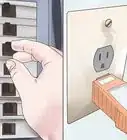This article was co-authored by Marvin Woo and by wikiHow staff writer, Amy Bobinger. Marvin Woo is a licensed electrician and the Owner of Woo's Electrical & Appliance based in East O’ahu. With over two decades of experience, he specializes in troubleshooting issues and maintaining residential electrical systems. Marvin is both licensed and insured to complete electrical work in the state of Hawaii.
There are 9 references cited in this article, which can be found at the bottom of the page.
This article has been viewed 271,943 times.
Batteries power all kinds of devices, from toys and electronics to life-saving medical devices. Some devices, like laptops, use batteries designed specifically for that model, in which case you may have to refer to the user manual to find out exactly how to change it. However, other devices use more common battery types, including AA, AAA, C, D, 9V, and button styles. Even if you've never changed a battery, it's an easy task you can do yourself!
If you're looking for how to change a car battery, visit https://www.wikihow.com/Change-a-Car-Battery
Things You Should Know
- Match the positive and negative ends of AA, AAA, C, and D batteries to the positive and negative terminals in your device’s battery compartment.
- Line up the snaps of 9-Volt batteries with the connectors inside your device. Slide the connector side into the battery compartment first.
- Install coin or button batteries with the positive side facing up unless otherwise directed.
Steps
Locating the Battery Compartment
-
1Examine the device for a small battery symbol or a plus and minus sign. The battery compartment on a device can be almost anywhere. It’s usually on the back or the bottom, so check these places first. It may be marked with a small battery-shaped symbol, or you may see a plus or minus sign, indicating the polarity of the battery.[1]
- These markings may be on the top or just to the side of the compartment door.
-
2Look for a compartment that slides off if there is no symbol. If you don’t see any markings, you may be able to locate the compartment by finding a piece that slides or snaps off of your device. Look for lines in the case that don’t match the other seam.
- You might also see a clasp or a lever that will release the compartment door.
- The battery compartment may also be held shut by one or more small screws.
Advertisement -
3Check the user manual if you’re not sure where the compartment is. If you have the instruction manual to your device, it should have a diagram showing where the batteries should go. If you don’t have the manual, you may be able to find one by searching for your device online.
- If you’re looking online, make sure to include the brand name and model number, if you know it.
-
4Remove any screws holding the compartment shut. Usually, the screws in a battery compartment are Phillips screws, meaning they have a cross-shaped dip in the head. To remove these screws, use a Phillips-head screwdriver with a cross-shaped tip.
- If the screw is stuck, you may be able to remove it using a screw extractor.
- In the case of a watch battery, you may need to use a special tool to remove the back of the watch.
-
5Look at the compartment door to determine what size battery you need. Usually, the battery size will be printed on the compartment door. If not, the information may be located inside the compartment. If it’s not listed, you might have to estimate the size of the battery, or try different sizes until you find the one that fits.
- AAA, AA, C, and D batteries are all 1.5V batteries, but the different sizes produce different currents, or the amount of power that comes out of the battery at once. AAA is the smallest traditional 1.5V battery, and is usually used to power small electronics. D is the largest 1.5V battery and usually charges larger items like flashlights.
- A 9V battery looks like a small box with snaps on top, and it's often used to power devices like smoke detectors and walkie-talkies.[2]
- Coin and button batteries are small and round, and they're used to power very small devices like watches, hearing aids, and computer components.[3]
Using AA, AAA, C, and D Batteries
-
1Look for a plus symbol on your battery. The polarity of batteries is what helps them supply current to a device.[4] The plus sign, or +, indicates the positive terminal. On AA, AAA, C, and D batteries, the positive end should be slightly raised.[5]
- The negative end of the battery should be flat, and it may or may not be marked with a minus, or -, symbol.
-
2Find the positive and negative symbols on your device. There should be a plus and minus sign inside the battery compartment. This will tell you which direction the battery needs to go.[6] The negative end may have a spring or a small metal lever.[7]
- If the polarity isn’t marked on your device, you may need to consult the manufacturer's instructions.
-
3Align the symbols on the battery with those on your device. It’s very important to make sure that each battery is properly aligned inside the device. If your battery faces the wrong way, it could cause your device to malfunction, or it could even cause the batteries to leak dangerous corrosive chemicals.
- The plus sign on the battery should match the plus sign on the device.
-
4Slide the battery into place with the negative end first. As you insert the negative end of the battery, you may press down a spring or a lever. By installing the negative end first, the battery will slide into the compartment more easily. You should then be able to easily snap the positive end into place.[8]
- The positive end of the battery should snap into place with a gentle push.
-
5Check the alignment of every battery. If you have multiple batteries side-by-side, they may alternate directions. This creates a series of current that amplifies the energy produced by the batteries. Make sure each battery faces the direction that’s indicated in the battery compartment or the user manual.[9]
- Some devices that use multiple batteries may continue to function if one battery is installed incorrectly, but you can damage the device or shorten the life of the batteries by doing so.
Putting in a 9-Volt Battery
-
1Look at the snaps on top of the 9-Volt battery. A 9V battery is small and square, with two snaps on the top. One is a male connector, and the other is female.[10]
-
2Line up the snaps on the battery with those inside the device. Inside the battery compartment on the device, you will see two snaps that resemble the ones on top of the battery. The male connector on the battery should align with the female connector on the battery compartment, and vice versa.
- It will be very obvious if you try to put in a 9V battery incorrectly, as the connectors will bump against each other and the battery won’t snap into place.
-
3Hold the battery at a 30° angle and slide the connector side in first. Once you’ve lined up the snaps, tilt the 9V battery slightly. Push the top of the battery in until the snaps are touching, then press down on the battery so that it snaps into place.[11]
- These types of batteries can be a little hard to install sometimes. If it doesn’t go in the first time, try again with a little more force.
Installing Coin and Button Batteries
-
1Examine the face of the battery for a + symbol. Coin and button batteries are small, flat, and round. Coin batteries are flatter, while button batteries usually have a smaller circumference. The top of the battery is usually etched with the battery size.[12]
- Usually only the positive side of the battery is etched. The negative side might not have any markings at all.
- In some button-style batteries, the positive side is slightly raised.
-
2Check the device for a positive symbol. Your battery compartment may be marked with a positive symbol, especially if there is a door or a slide-out mechanism where you should put the battery. However, if you had to pry off a cover, there may not be a marking indicating which direction the battery should go.[13]
- In the case of devices with a battery door, such as a hearing aid, you may find it difficult to close the compartment if you put the battery in backward.
-
3Insert the battery with the positive side facing up unless directed otherwise. If you don’t see any markings on your device, you should assume that the positive side of the battery should be face-up.[14]
- If you’re installing a coin cell battery on a computer’s motherboard, for instance, there may not be any markings to indicate which way the battery should go, but the positive side should face upward.
- If you’re still not sure, consult the device’s user manual.
Warnings
- Always double-check that your batteries are installed correctly. Improper battery installation could lead to the battery leaking or rupturing, which can result in dangerous exposure to corrosive chemicals.⧼thumbs_response⧽
- Never store batteries in your pockets or purse, as they may leak.⧼thumbs_response⧽
References
- ↑ Marvin Woo. Licensed Electrician. Expert Interview. 1 December 2021.
- ↑ https://sciencing.com/9volt-battery-projects-12000409.html
- ↑ https://www.epa.gov/mercury/mercury-batteries
- ↑ Marvin Woo. Licensed Electrician. Expert Interview. 1 December 2021.
- ↑ https://www.duracell.com/en-us/help/faq/
- ↑ Marvin Woo. Licensed Electrician. Expert Interview. 1 December 2021.
- ↑ https://learn.sparkfun.com/tutorials/polarity
- ↑ https://www.duracell.com/en-us/help/faq/
- ↑ https://www.duracell.com/en-us/help/faq/
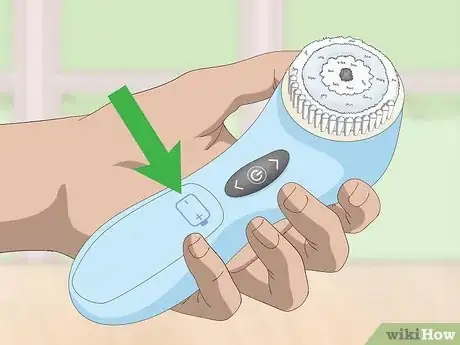

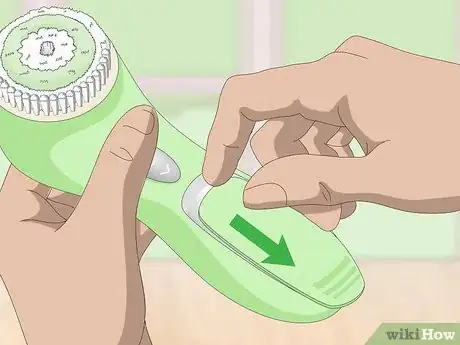
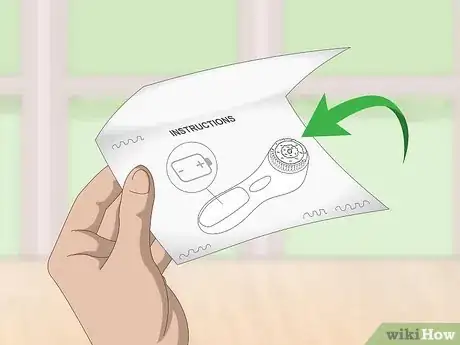
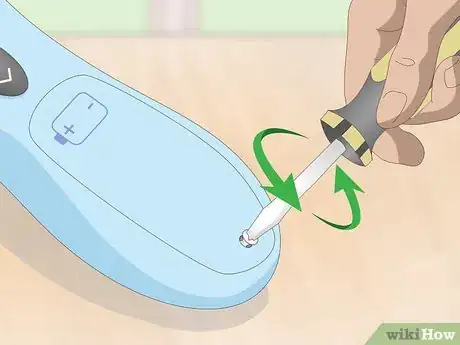
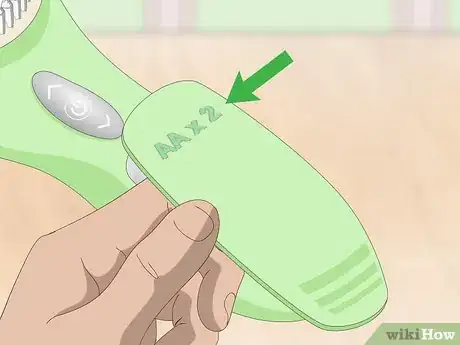





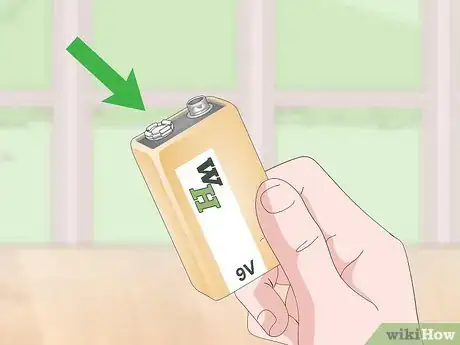
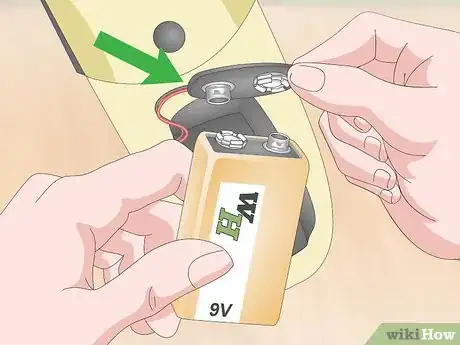


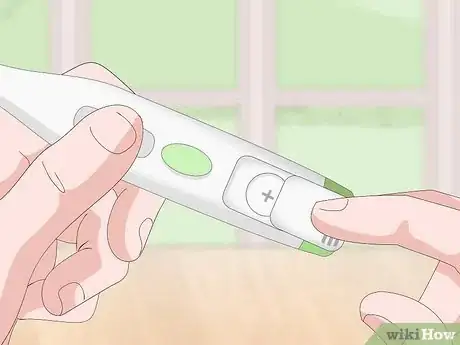
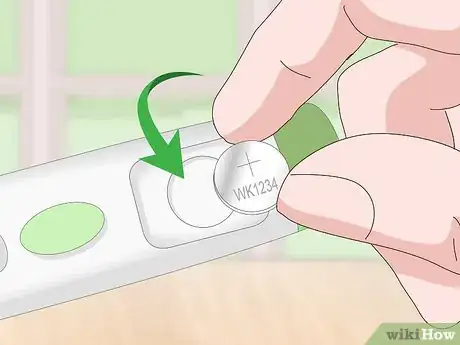


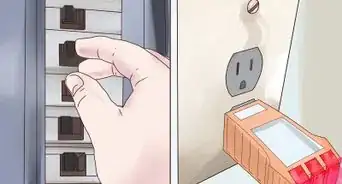
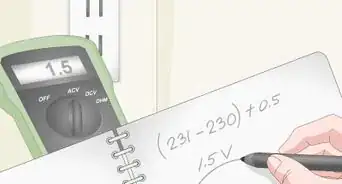
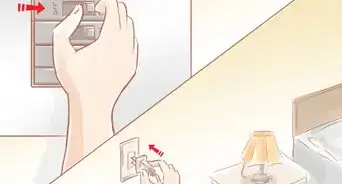
-Electric-Shock-Step-8.webp)







-Step-6-Version-2.webp)



